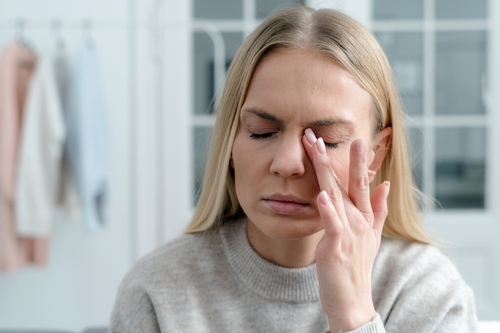
Dry eye is a condition that happens when the eyes can’t make enough tears or when tears don’t work properly. This causes the eyes to feel uncomfortable and often leads to various vision problems. Men and women can both get dry eyes, but it’s mostly common in women, particularly those who are through menopause.
Many things can cause dry eyes, such as lupus and thyroid disease. Looking at a digital screen and reading for a long time can also cause dry eyes. So do some medications: sleeping pills, beta-blockers, diuretics, allergy and cold medicines, and antidepressants. It seems odd, but having many tears shows you have dry eyes.
Treatment Options for Dry Eye
Plenty of medications and procedures can treat chronic and temporary dry eye. Before trying any of the treatments, talk with your doctor first. There may be an external factor or underlying condition for why you have it. Knowing what these are ensures you receive the correct treatment.
Over-the-Counter Treatments
The first line of treatment for dry eye is over-the-counter treatments such as artificial tears, ointments, gels, and gel inserts. They provide temporary relief for your symptoms, primarily replacing your tears. Various options are available, and doctors recommend preservative-free solutions for artificial tears.
OTC treatments are ideal for mild cases of dry eyes. But when you look for these products, doctors advise avoiding eye drops, claiming they clear up red eyes. Products like these constrict the eye’s blood vessels, so they appear whiter. They’re not effective in curing dry eyes, and the red eyes return once the product wears off.
Prescription Treatments
Eye doctors prescribe drops for moderate and severe cases of dry eyes, depending on what causes them. Two common prescription drops are Lifitegrast and Cyclosporine, which effectively reduce corneal damage, increase tear production, and eliminate dry eye symptoms. Lifitegrast, on the other hand, can minimize the dry eye’s inflammatory cycle and boost tear production. Besides medication, eye doctors also prescribe scleral lenses. These special types of contacts hydrate the eyes, reducing dry eye symptoms.
Medical and Surgical Procedures
One way to reduce dry eye symptoms is by keeping natural tears longer in the eyes. The eye doctor has to block the tear ducts, which can be done with gel-like plugs or tiny silicone. These plugs are removable and reversible, so they’re only a temporary fix. There’s also a more permanent fix, another type of tear plug called punctal cauterization. It can be done in more severe cases.
Besides the plug, you can surgically fix your eyelids to treat dry eyes. This surgery is ideal if your dry eye is caused by loose lower eyelids that make tears drain too fast. Your eye doctor may recommend fixing your eyelids to keep the tears in your eyes much longer. Applying heat to the eyelid may also help with dry eyes.
Natural Treatments
You can relieve dry eye symptoms with natural treatments or lifestyle changes. The use of warm compresses, eyelid cleaners, eyelid massage, and specialized goggles can help manage dry eye symptoms more naturally. Increasing humidity in your place, using sunglasses, changing your diet, and taking supplements for improved eye health also help treat dry eyes.
Find out more about dry eye treatments at Vision Source Grove Heights. Call us at (346) 782-0288 or visit our Houston, Texas, office.








